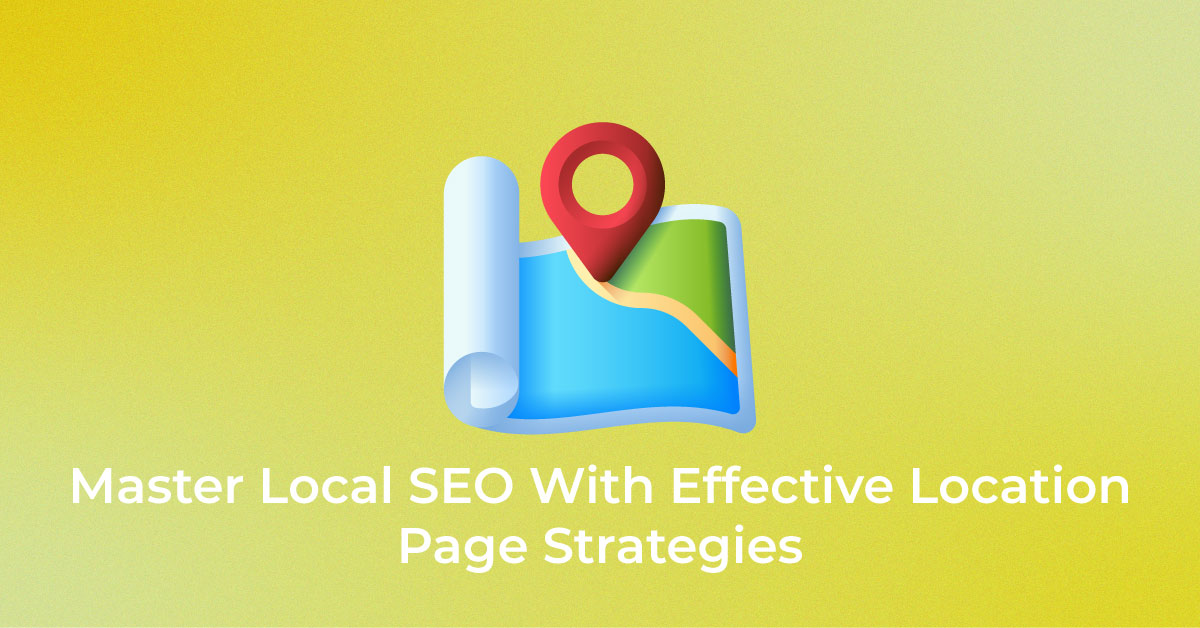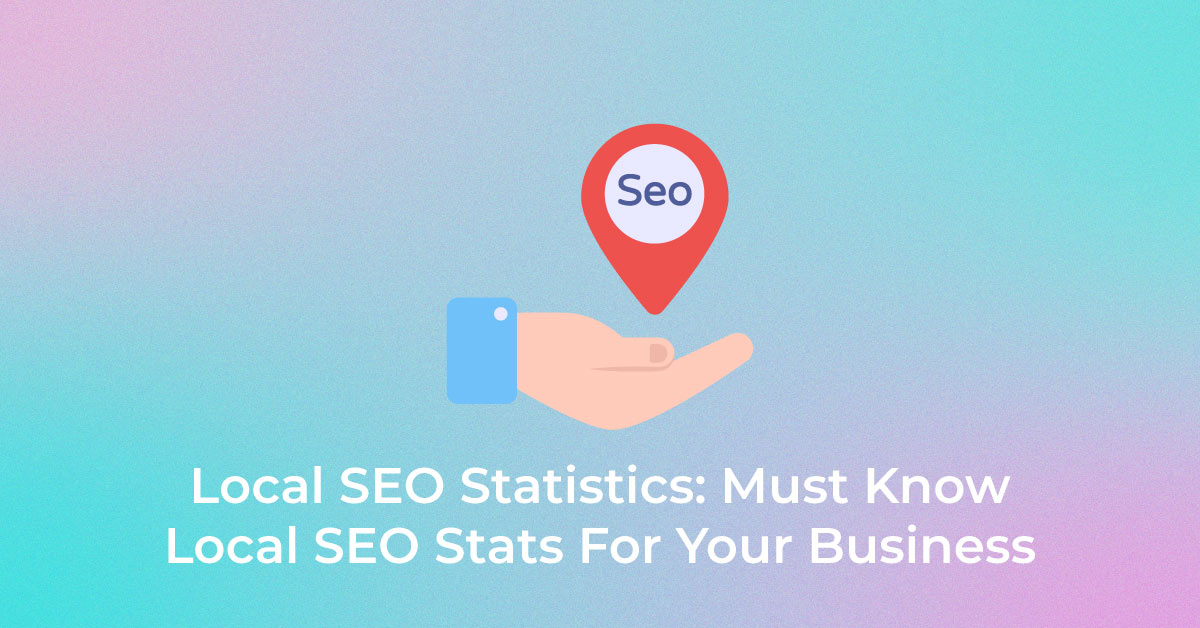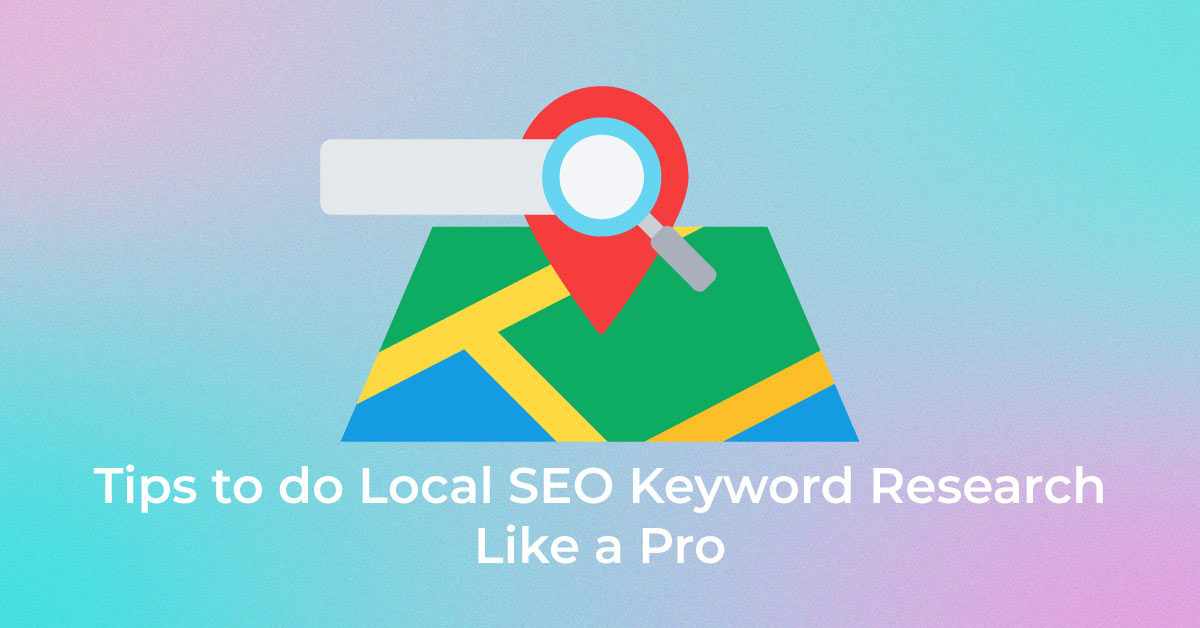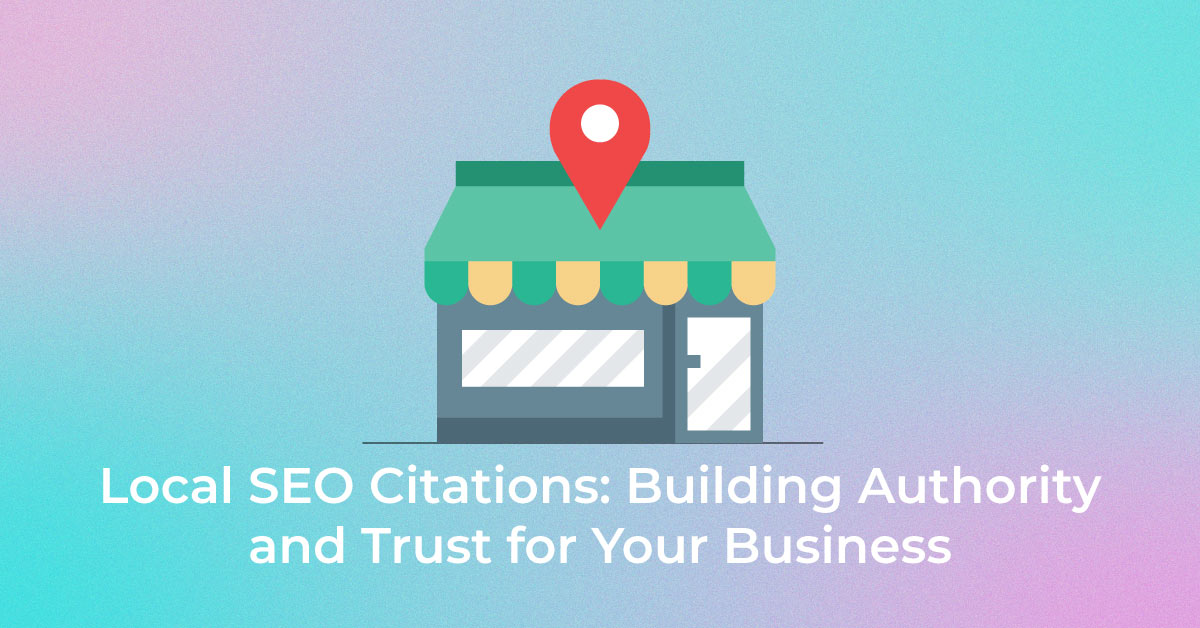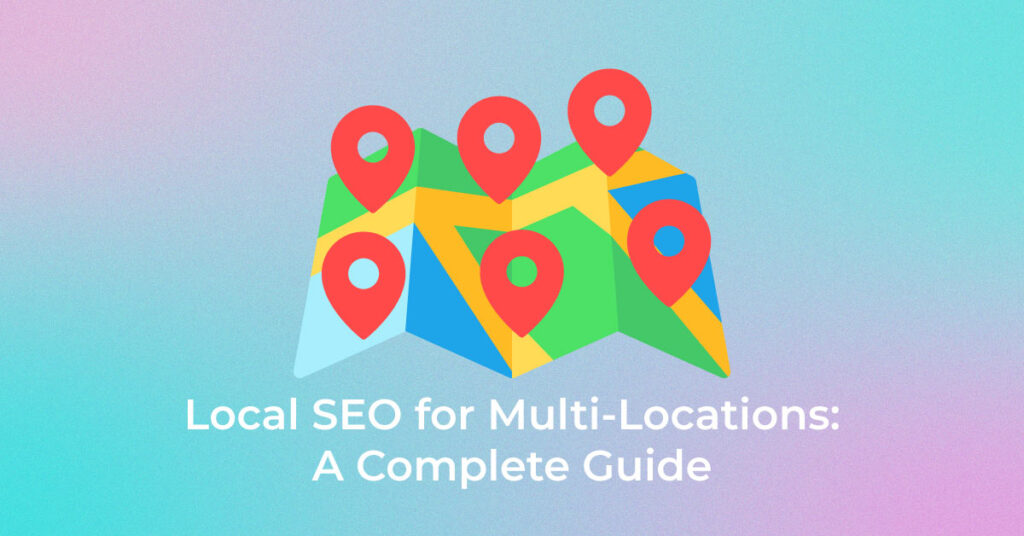What is local SEO and its importance?
Local SEO is a specialized branch of search engine optimization that focuses on enhancing a business’s visibility in localized search engine results. When you apply local SEO principles, you ensure that your business pops up when customers in your area search for products or services related to your industry. This hyper-targeted approach is important because it drives foot traffic to brick-and-mortar locations, enhances local online visibility, and connects your business to consumers in the community, increasing the likelihood of conversion.
Understanding local SEO is particularly crucial for multi-location businesses. Search engines like Google tailor search results based on the user’s location to provide the most relevant listings, making local SEO a key player in your marketing strategy. It also means you’re more likely to reach individuals who are most likely to visit your stores and make a purchase, thereby driving both physical and online business.
Challenges of Multi-Locations SEO
1. Complexity of managing multiple locations
When managing multiple locations, the complexity comes from the need to handle numerous local SEO tasks on a larger scale. Each location has its own unique features, including varying competition and distinct customer preferences. This requires a tailored approach to ensure that the search visibility of each branch is optimized without overlap.
You’ll need to juggle multiple Google My Business profiles, ensuring each location has accurate and specific details such as address, business hours, and services offered. The challenge is to maintain uniformity in branding while tailoring certain aspects to the local context. Additionally, overseeing local citations, reviews, and content for various locations calls for a vigilant and methodical strategy that can stretch your resources.
With a multilocation approach, you must also consider how search engines index and rank each separate location. The objective is to prevent self-competition and confusion among search engines, which can inadvertently dilute your overall online presence. Coordination across locations to streamline content, promotions, and local SEO efforts is no small task but essential for current and scalable success.
2. Maintaining consistent branding across locations
Maintaining consistent branding across multiple locations is a fundamental aspect of local SEO that can significantly influence your brand’s recognition and trust among customers. For multi-location businesses, consistency means applying a uniform brand name, logo, tagline, and core messages across all online and offline assets. This strategy creates a cohesive image that customers can easily identify, irrespective of the location they interact with.
However, you should also balance this uniformity with localized elements that resonate with each community you serve. On your website, this could translate into location-specific pages that not only reflect the overall brand but also highlight local attributes, such as native staff members or local landmarks. On social media or Google My Business listings, include images, offers, and news pertinent to the individual locations while keeping the overall tone and style aligned with the brand.
Consistency in branding avoids confusion and fosters brand loyalty, but grappling with it across many locations can be logistically challenging. Coordination between different branches and the central marketing team is vital, as is a system for approving materials and messages so that they adhere to brand guidelines. Regular audits of your branding across platforms can help identify and rectify any discrepancies which, if unaddressed, could erode customer confidence.
3. Differentiating services/products by location
Differentiating services and products by location can be a strategic advantage for multi-location businesses. While consistent branding is key, tailoring offerings to meet local tastes, needs, and cultural nuances can significantly enhance local market penetration and customer satisfaction. It demonstrates your business’s commitment to understanding and serving the community, a move that can foster loyalty and word-of-mouth promotion.
To successfully personalize services or products per location, conduct market research to capture the local consumer behavior and preferences. This insight allows you to tweak your inventory or services suitably – think seasonal items in retail stores that vary by regional climate, or menu items in restaurant chains that reflect local culinary tastes.
Implementing such differentiation requires a delicate balance to ensure the core identity and quality of your business remain uncompromised. Communication between local managers and the central team should be fluid to make sure that any changes support the overall business strategy. Additionally, clearly showcasing these local variations on your localized web pages and GMB listings will further optimize your local SEO, as it can help search engines recognize the unique offerings of each location.
Keep in mind, though, that too much variation can dilute brand messaging. Therefore, ensure the central theme of your brand is not eclipsed by local differentiators.
4. Local competition dynamics
Navigating local competition dynamics is a fascinating part of multi-location SEO. Each of your locations may face different competitors depending on their geographical area and market environment. This means that while one location might be vying for market share against large, national chains, another might be competing with smaller, boutique establishments.
For your business to stand out, you need to understand the strengths, weaknesses, and strategies of your local competitors. Conduct a competitor analysis that takes into account the local search landscape. Look at the keywords they are ranking for, their online reviews, content strategy, backlink profile, and GMB activities. Use this information to identify gaps in their online presence that you can exploit and to fine-tune your own local SEO tactics.
Adjusting your approach to suit the local dynamic can help secure a competitive edge. Tailoring promotions, content, and even customer service can set your locations apart from the competition. For instance, if local competitors are not actively soliciting customer reviews or engaging with their community events, stepping up these activities can improve your visibility and desirability in local search results.
Remember, as much as local SEO is about visibility, it’s also about differentiation. By understanding the competition in each locale, you can sharpen your marketing tactics to ensure your locations stand out in the right way.
Setting Up Google My Business (GMB)
Setting up Google My Business (GMB) for multiple locations can streamline your local SEO efforts and bolster your online presence. Start by signing into your Google account, visit the Google Business Profile manager, and begin by adding your first business location. Input your business name, its category, and the physical address. This process is repeated for each location, with careful attention to input exact, accurate details reflective of each individual store.
It’s importantly crucial that you mention only the areas that each specific location serves when prompted to include service areas. Consistency and precision in your listings communicate reliability to potential customers and to Google’s algorithms that favor accuracy in their rankings.
Optimizing your profiles doesn’t stop at setup. You’ll want to edit your business information comprehensively, adding phone numbers, store hours, photos, and additional details customers seek out. This isn’t a one-and-done process; keep your information up-to-date to maintain its relevance and effectiveness.
For businesses with multiple locations, Google offers tools designed to streamline the process. Use the bulk upload spreadsheet to update information for each location swiftly. Be meticulous and review all the data before submitting, as inaccuracies can negatively impact your local SEO efforts.
Once your listings are live, encourage customers to leave reviews, and respond promptly to address any feedback. Active engagement on your GMB profile not only enhances customer trust but also signals to Google that your business is authoritative and interactive, potentially boosting your search ranking.
Local Keywords Strategy
Researching location-based keywords
Researching location-based keywords is a fundamental task in optimizing your multi-location business for local searches. Begin by understanding the language and search behaviors of customers in each specific geographic region. Local keyword research often reveals terms that are popular in one area but not necessarily another, allowing for a highly targeted approach.
Use various SEO tools to discover how potential customers search for your products or services in their locale. Incorporate location-based modifiers such as city, neighborhood, or even popular local landmarks in conjunction with your primary keywords. For instance, instead of just “coffee shop,” you might target “coffee shop downtown [City Name]” or “coffee shop near [Landmark].”
You must also pay attention to the search volume and competition for each keyword. Local keywords often have lower search volumes compared to broader terms, but the search intent behind them is usually stronger, indicating a readiness to engage or purchase.
Analyze search patterns and consider trends, seasonality, and local events that might influence search behavior. By tailoring your keyword strategy to each location, you make it easier for local customers to find and connect with your business when they are most likely to convert.
Creating location-specific content
Creating location-specific content is a powerful way to speak directly to the unique characteristics and interests of your various markets. Start by identifying topics that are relevant to the customers in each specific area you serve. This could include community events, local news, or regionally popular products and services. Tailoring content in this manner signals to search engines that your content is particularly relevant to local searches, boosting your visibility.
For instance, if you operate a restaurant, you might write blog posts about sourcing ingredients from local farms for your [City Name] location, while for your coastal location, you could focus on the freshest seafood dishes. Even when employing similar themes across different local pages, ensure the content reflects each area’s distinct offerings.
Remember that while it’s tempting to duplicate content across multiple locations with minor tweaks, Google’s search algorithms are sophisticated enough to recognize and reward unique content that provides value to users. Strive to make each piece of location-specific content stand out with unique information and local insights. Not only does this benefit your SEO, but it also demonstrates to your customers that you’re engaged and invested in their local community.
Long-tail vs. short-tail keywords in local SEO
In local SEO, the distinction between long-tail and short-tail keywords is crucial. Short-tail keywords are broader and generally consist of one to three words, such as “dentist” or “car repair.” They typically have high search volumes but also high competition and may not indicate strong buyer intent. Conversely, long-tail keywords are more specific phrases that often contain location-based details, such as “kids’ dentist in [City Name]” or “car repair shop near [Neighborhood].”
Long-tail keywords are less competitive, and though they attract fewer searches, the traffic they bring is often more targeted and ready to take action. They offer the double advantage of being less competitive and presenting a higher conversion rate as they capture users with specific intentions.
When incorporating these into your local SEO strategy, consider the nuances of each location. In some areas, short-tail keywords with a local modifier might be enough; in others, particularly competitive markets, you’ll gain an edge by focusing on more descriptive long-tail keywords.
Tailoring your strategy to include a mix of both can help you capture the widest audience while ensuring that you’re not missing out on those potential customers who are farther along in the decision-making process and are conducting more specific searches.
On-Page SEO for Multi-Locations Pages
Structuring a website for multiple locations (e.g., subdirectories vs. subdomains)
Website localization often involves structuring your site strategically to cater to multiple locations. This includes choosing between subdirectories (e.g., www.yoursite.com/location) and subdomains (e.g., location.yoursite.com), each offering unique benefits. Proper organization ensures clarity, better SEO alignment, and a seamless user experience tailored to specific geographic audiences.
Subdirectories are generally favored for local SEO as they keep everything under a single domain, consolidating your site’s SEO equity. They are simpler to manage and can leverage the domain authority of the main site to boost rankings of the local pages. When you use subdirectories, you’re telling search engines that your location pages are all part of one larger site, which can contribute to a stronger cumulative ranking power.
Subdomains, on the other hand, are treated as separate entities by search engines, and each needs to build its own domain authority. While this approach can be useful for businesses with vastly different location services or branding, it’s typically more challenging to manage from an SEO perspective.
For multi-location businesses, utilizing subdirectories is often the smarter choice for delivering location-specific content while maintaining the overall strength of your domain’s search engine visibility.
Creating unique location pages
Creating unique location pages is vital for serving both the user’s need for relevant information and optimizing for local SEO. Each location page should serve as a micro-homepage for the respective branch, complete with location-specific details such as an address, phone number, hours of operation, personalized descriptions, staff information, and unique selling points.
For effective location page strategies, create unique, locally resonant content for each page. Avoid duplicating content by merely swapping city names. Instead, incorporate local testimonials, storefront images, and details about community involvement or sponsorships to build a genuine connection with the target audience.
Optimize each page with local SEO tactics by including location-based keywords in the title tags, meta descriptions, headers, and body content. Don’t forget to update local schema markup, making it easier for search engines to process and display location-specific information in rich snippets.
These unique pages help users quickly find the information they need for their nearest or preferred location, significantly enhancing the user experience and potentially increasing in-store visits.
Using schema markup for local businesses
Using schema markup for local businesses is essential for enhancing the richness of your pages in search results, ultimately aiding users to find the specific information they’re searching for quickly. Schema markup, a code added to your website, helps search engines understand the content and context of your pages, often enabling rich results or Knowledge Graph cards.
For multi-location businesses, utilize LocalBusiness schema to delineate each branch’s essential information. This could include the business’s name, address, phone number, opening hours, aggregate rating, and available services or products. Service schema can be combined with LocalBusiness schema to further detail the offerings unique to each place.
Implementing schema markup across your location pages amplifies your visibility in search with potential features like star ratings and business hours directly in the search results, thereby increasing the likelihood of users clicking through to your site.
While schema is not a direct ranking factor, it can indirectly impact your rankings by improving click-through rates and ensuring search engine bots have all the necessary details to accurately index and display your business’s information across various locations.
Content Marketing for Local Engagement
Content marketing for local engagement is about crafting content that resonates with the community surrounding each of your business locations. It’s a strategic method to cultivate relevancy and build relationships with your target audiences at a local level. Focus on creating articles, videos, and social media posts that highlight local events, charities, traditions, and stories. Leverage local lingo and reference community landmarks to form a stronger connection with residents.
Host a blog on each microsite dedicated to local matters, showcasing your involvement and commitment to the locale. Distribute this content through email marketing, social platforms tailored to each location, and, where suitable, consider paid ads to maximize reach.
Participate and generate content around local events, sponsorships, and celebrations where your business is involved. These activities align with local user interests, increasing the shareability of your content and fostering brand advocates within the community.
Such tailored content not only appeals more to the local audience but also sends positive signals to search engines about the locality of your services, potentially enhancing your rankings in local search results.
Building Local Citations
Building local citations involves listing your business details on a variety of platforms, which enhances your local SEO by validating your company’s existence and location to search engines. Citations can occur on local business directories, websites, social platforms, and more. The key is to ensure that your business’s Name, Address, and Phone Number (NAP) are consistently presented across all citations.
Start by claiming and optimizing your business on prominent directories such as Yelp, Google Business Profile, Bing Places, and industry-specific directories. But don’t overlook the power of local directories or community websites, as they offer hyper-local relevance which can be particularly beneficial.
Regularly audit your citations to check for inaccuracies and update them as necessary. Consistency is crucial; discrepancies in your NAP can confuse search engines and potentially degrade your local SEO efforts.
Agency Tip: Employ citation tracking tools to streamline management across your locations. These tools can detect inconsistencies, helping to maintain citation health and save you from the time-consuming process of manual updates.
Remember, each citation works like a small nod of approval to search engines, reinforcing your business’s presence and trustworthiness in your respective local markets.
Local Link Building Strategies
Effective local SEO backlinks strategies include earning links from reputable local sources to boost your business’s authority in specific regions. Partner with local businesses, sponsor community events, contribute guest posts to regional publishers, or build connections through local partnerships to secure high-quality, relevant backlinks.
Start by building relationships with local influencers, non-competing businesses, and community organizations; these connections can lead to backlink opportunities on their websites or social media accounts. Encourage local press to cover your participation in community events, and share these stories on your own digital channels with links back to your website.
Another method is to offer valuable content or resources to local audiences through guest blog posts, interviews, or features in regional publications. This approach can strengthen your local reputation and generate backlinks simultaneously.
Additionally, be present in local online forums and discussion boards, offering expertise and advice, which can result in natural referencing and linking to your site. Don’t forget local business associations or chambers of commerce; a membership often includes a directory listing with a valuable backlink.
Prioritize these organic, community-centric link-building efforts—although they take time, they contribute positively to your local SEO and can yield sustainable benefits in the long term. Remember, the quality and relevance of backlinks often trump quantity in effective SEO strategies.
Common Mistakes to Avoid
Overlooking GMB optimization
Overlooking the optimization of your Google My Business (GMB) listing is a common misstep that can impede your local SEO performance. A fully optimized GMB profile is essential, as it’s one of the first things a potential customer encounters when they search for your business or services online. Complete every section of your GMB profile with attention to detail, including a thorough description, accurate business hours, up-to-date contact information, and high-quality photos.
Categories in GMB should be precisely selected to match the core services of each location. Regularly post updates, offers, and events to keep your listing active and engaging. Geotag photos to reinforce location relevance, and encourage customers to leave reviews, which you should respond to promptly and professionally.
Not optimizing your GMB can lead to missed opportunities in appearing in local search showcases like the Local Pack or Google Maps, areas that often receive high user engagement. Take advantage of this digital real estate to improve your local visibility and credibility.
Duplicate content across location pages
Duplicate content across location pages can have detrimental effects on your local SEO efforts. It’s essential to provide unique, valuable content for each location page on your website. Simply duplicating content and swapping out location names not only degrades the user experience but can also trigger Google’s Panda filter, leading to reduced search visibility for your pages.
To avoid this, customize each location’s page with distinct descriptions, testimonials, staff information, and local news or events. This approach demonstrates to search engines that each page is providing fresh, location-specific content valuable to users. Also, employ strategies like canonical tags or 301 redirects to manage duplicate content and guide search engines towards your preferred URLs for indexing.
Keep in mind that while search engines don’t impose a strict duplicate content penalty, the dilution of content can limit your pages’ ability to rank well. A commitment to creating singular, pertinent content for each location will not only favor your SEO status but elevate the overall online experience for your customers.
Ignoring mobile optimization
Ignoring mobile optimization is a critical oversight in today’s digital landscape. With mobile usage surpassing desktop, it’s paramount that your multi-location business’s website is designed for mobile-first indexing. Google predominantly uses the mobile version of a site for ranking and indexing, suggesting that a non-optimized mobile site could hinder your search performance significantly.
To ensure mobile optimization, use responsive web design so your site adapts seamlessly to any screen size. Prioritize fast loading times as they greatly influence bounce rates and user satisfaction—slow mobile experiences can drive potential customers away. Implement simplified navigation tailored for touch screens, and ensure that content is easily viewable without extensive scrolling or zooming.
Also, consider the local mobile user’s search intent. They’re often looking for quick information, such as directions or contact details. Therefore, include click-to-call buttons and integrate maps for each location to cater to on-the-go searches.
Overlooking these aspects of mobile optimization might lead to a poor user experience, directly impacting your site engagement metrics, which are critical ranking factors. Adopt a mobile-first approach to reflect both Google’s preferences and the predominant behaviors within your customer base.
Not tracking local SEO performance
Not tracking local SEO performance is like navigating without a map; you may move forward, but you won’t know if you’re on the right path to meet your objectives. It’s vital to monitor various metrics to understand the impact of your local SEO strategies.
Use tools such as Google Analytics and Google Search Console to track website traffic, engagement, and conversion rates. Look at metrics specific to each location, such as the number of visits to the location page or clicks for driving directions on GMB listings. Track keyword rankings for location-specific terms to understand and optimize your visibility in search.
By assessing these data points, you can gauge which locations are performing well and which need more attention—information that is critical to refining your SEO plan. Without this insight, you can miss out on opportunities to optimize further, improve user experience, or demonstrate the ROI of your SEO initiatives.
Regular analysis allows you to maintain a dynamic approach, responding quickly to changes in search trends or local competition. It is an indispensable component of any successful local SEO strategy and your overarching business growth.
Pro Tips:
For a polished local SEO strategy with multiple locations, bear these tips in mind:
- Standardize NAP Information: Ensure that your Name, Address, and Phone Number are consistently listed across all platforms.
- Prioritize Google My Business: Regularly update your profiles, post fresh content, and actively manage and respond to reviews.
- Leverage Local Content: Develop content strategies that engage each community with locally relevant and unique material on each location’s page.
- Foster Local Link Building: Build relationships with local institutions, media, and businesses to secure quality backlinks and improve local authority.
- Monitor Local Citations: Keep all citations accurate and up to date with local directories and platforms to maintain a strong local presence.
- Embrace Customer Feedback: Utilize customer reviews as a tool to improve service and as a local ranking factor.
- Use Schema Markup: Implement structured data markup to accurately represent your business and enable rich results in search.
- Track Localized Metrics: Monitor KPIs specific to each location to steer your local SEO practices and gauge their effectiveness.
- Mobile-Optimize Your Website: Ensure that your site is fully responsive and optimized for mobile, considering the majority of local searches occur on mobile devices.
- Avoid Duplicate Content: Dedicate time to crafting unique content for each location page to reinforce local relevance and prevent SEO issues.
Implementing these pro tips can significantly bolster your local SEO for multi-location businesses and lead to improved online visibility and in-store foot traffic.
FAQ: Expert Answers on Multi-Locations SEO
How Does Multi-Locations SEO Differ from Standard Local SEO?
Multi-location SEO differs from standard local SEO primarily in its scale and complexity. While standard local SEO focuses on optimizing the online presence for a single location, multi-location SEO must address the nuances of each location under one brand. This includes managing multiple Google My Business profiles, creating unique content and location-specific pages, and adapting to varying local markets. The key challenge is to ensure brand consistency while also tailoring strategies to each location’s unique competitive landscape and customer demographics.
Can You Target Multiple Cities with a Single Location Page?
It’s generally not recommended to target multiple cities with a single location page. Instead, create dedicated pages for each city you serve. This allows you to tailor the content, keywords, and SEO strategies to the specific local audience of each city. A single page trying to target multiple cities can fall short in personalization and relevance, potentially diluting the strength of your local SEO efforts and confusing both users and search engines.
Popular Searches
How useful was this post?
0 / 5. 0











